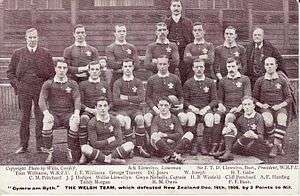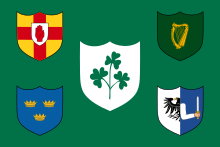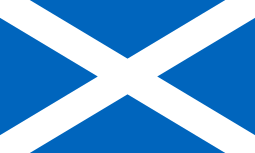Teddy Morgan
Edward "Teddy" Morgan (22 May 1880 – 1 September 1949)[3] was a Welsh international rugby union player. He was a member of the winning Wales team who beat the 1905 touring All Blacks and is remembered for scoring the winning try. He played club rugby for London Welsh and Swansea.
 Dr. Morgan in Wales jersey (c 1905) | |||||||||||||||||||||||||||||
| Birth name | Edward T. Morgan | ||||||||||||||||||||||||||||
|---|---|---|---|---|---|---|---|---|---|---|---|---|---|---|---|---|---|---|---|---|---|---|---|---|---|---|---|---|---|
| Date of birth | 22 May 1880 | ||||||||||||||||||||||||||||
| Place of birth | Aberdare, Wales | ||||||||||||||||||||||||||||
| Date of death | 1 September 1949 (aged 69) | ||||||||||||||||||||||||||||
| Place of death | North Walsham[1] England | ||||||||||||||||||||||||||||
| Height | 171 cm (5 ft 7 in) | ||||||||||||||||||||||||||||
| Weight | 70 kg (11 st 0 lb; 154 lb) | ||||||||||||||||||||||||||||
| School | Christ College, Brecon[2] | ||||||||||||||||||||||||||||
| University | Guy's Hospital | ||||||||||||||||||||||||||||
| Notable relative(s) | William Llewellyn Morgan, brother Guy Morgan, nephew | ||||||||||||||||||||||||||||
| Occupation(s) | doctor | ||||||||||||||||||||||||||||
| Rugby union career | |||||||||||||||||||||||||||||
| |||||||||||||||||||||||||||||
Career
Morgan became a General Practitioner in Sketty, Swansea before moving to a new practice in East Anglia. While at Sketty, another international rugby player joined his practice in the early 1920s, D Bertram, who would go on to be capped 11 times for Scotland.[4] Morgan died on 1 September 1949 in North Walsham. In 2008, Morgan was celebrated by the local council when it was decided to raise a blue plaque at his birthplace to commemorate his life.[5]
Rugby career
Wales

Morgan moved to London from Newport in 1902 to take up a post at Guy's Hospital, and played with London Welsh. It was while playing in London that Morgan earned his first international cap, for Wales against England. Morgan's career with Wales saw him score 14 tries from the wing, but his best-remembered was that against the Original All Blacks at Cardiff Arms Park on 16 December 1905. In the monumental match between the unbeaten All Blacks and the Triple Crown-winning Welsh team, Morgan is believed to have led his team in singing the Welsh national anthem in response to the New Zealanders' haka.[2] This was the first time a national anthem had been sung at a sporting event.[6] The strongly contested game was decided by a single score. In the twenty-fifth minute, Welsh scrum half Dicky Owen released the ball to Cliff Pritchard, who received the ball at ankle level before darting forward. Having run past Bob Dean, Pritchard released to Rhys Gabe who in turn found Morgan. Morgan dummied George Gillett and touched the ball down in the corner.[7]
After the match Morgan expressed disagreement with the referee's controversial decision to disallow a try claimed by New Zealand player Bob Deans. A contemporary reporter stated "Morgan sprinted across from the left wing, and helped Winfield to save what otherwise would have been a try by tackling Deans before be grounded the ball, and, though a splendid effort was made by the centre threequarter to straggle over, timely reinforcements came to Morgan, and the ball was grounded between two and three feet from the line, though Deans considers he grounded the ball in goal.[8] But the incident has been the subject of different accounts, with Cliff Pritchard, Rhys Gabe and Welsh captain Gwyn Nicholls claiming to have been among the tacklers and in a good position to see that the ball was grounded short of the line.[9][10][11]
International games played
Wales[12]






British Isles
In 1904 Morgan was one of the Welsh players chosen to tour Australasia[13] under the captaincy of Bedell-Sivright. Morgan would captain the British team against both Australia and New Zealand during this tour.[10]
Bibliography
- Jones, Stephen; Paul Beken (1985). Dragon in Exile, The Centenary History of London Welsh R.F.C. London: Springwood Books. ISBN 0-86254-125-5.
- Parry-Jones, David (1999). Prince Gwyn, Gwyn Nicholls and the First Golden Era of Welsh Rugby. Bridgend: seren. ISBN 1-85411-262-7.
- Thomas, Wayne (1979). A Century of Welsh Rugby Players. Ansells Ltd.
- Smith, David; Williams, Gareth (1980). Fields of Praise: The Official History of The Welsh Rugby Union. Cardiff: University of Wales Press. ISBN 0-7083-0766-3.
References
- Newport RFC Personnel Profile Archived 18 May 2011 at the Wayback Machine
- "School remembers Teddy's 1905 try". BBC. 4 February 2005. Retrieved 10 July 2008.
- WRU player profile
- Swansea R.F.C. player profiles
- Blue plaques mark proud heritage BBC News 24 September 2008
- "The 1905/06 'Originals'". rugbymuseum.co.nz. Archived from the original on 26 March 2013. Retrieved 10 July 2008.
- Parry-Jones (1999), pg 152.
- Wales v. New Zealand. A Welsh Triumph. Report by "Old Stager", Cardiff Times and South Wales Weekly News, 23 December 1905, at National Library of Wales.
- Davis J. C. Old Welsh Rugby Heroes Foregather at the Microphone The Referee, Sydney, 13 February 1936, at Trove
- Thomas (1979), pg39.
- Parry-Jones (1999), pg 156.
- Smith (1980), pg 467.
- Smith (1980), pg 148.